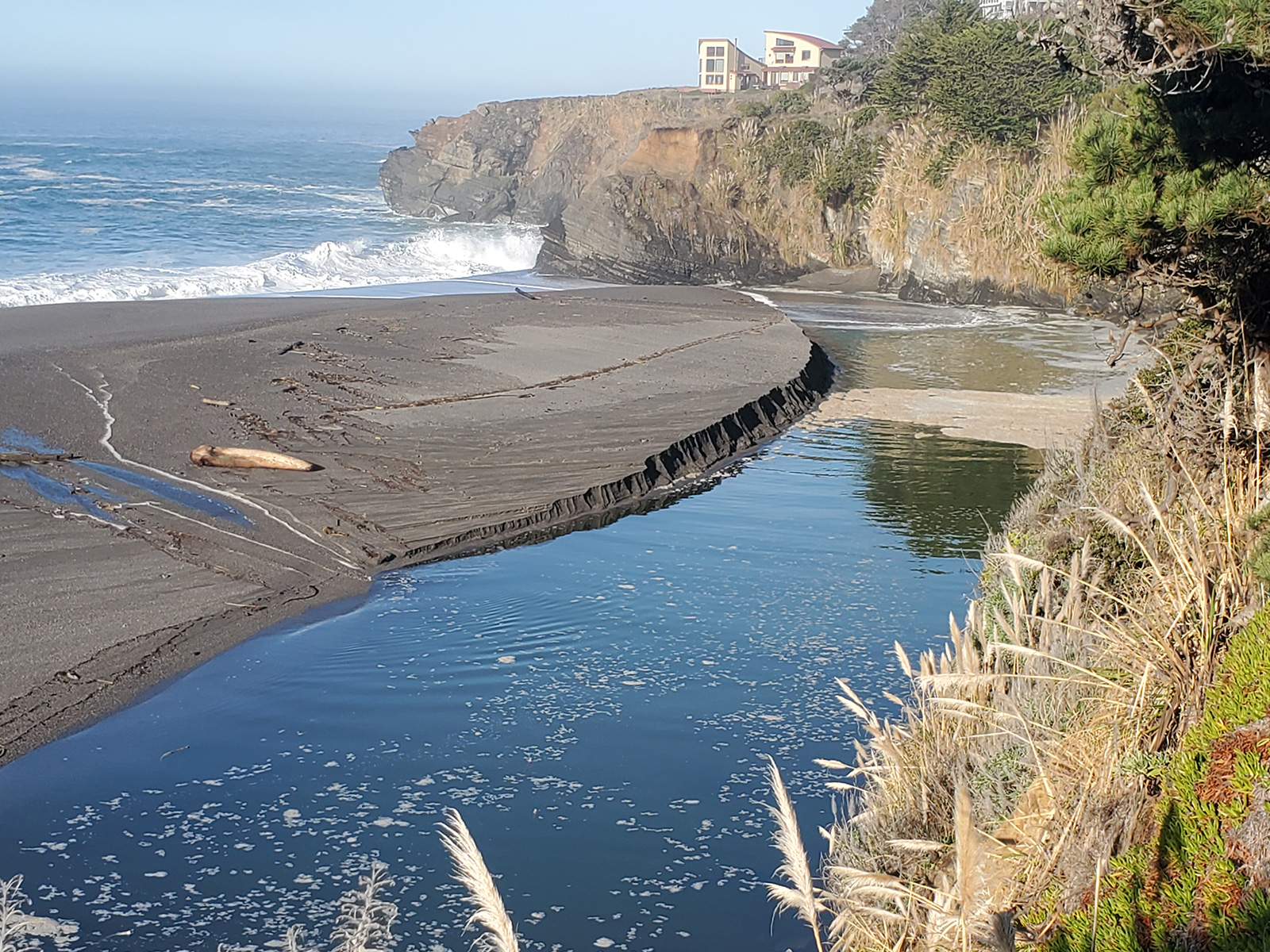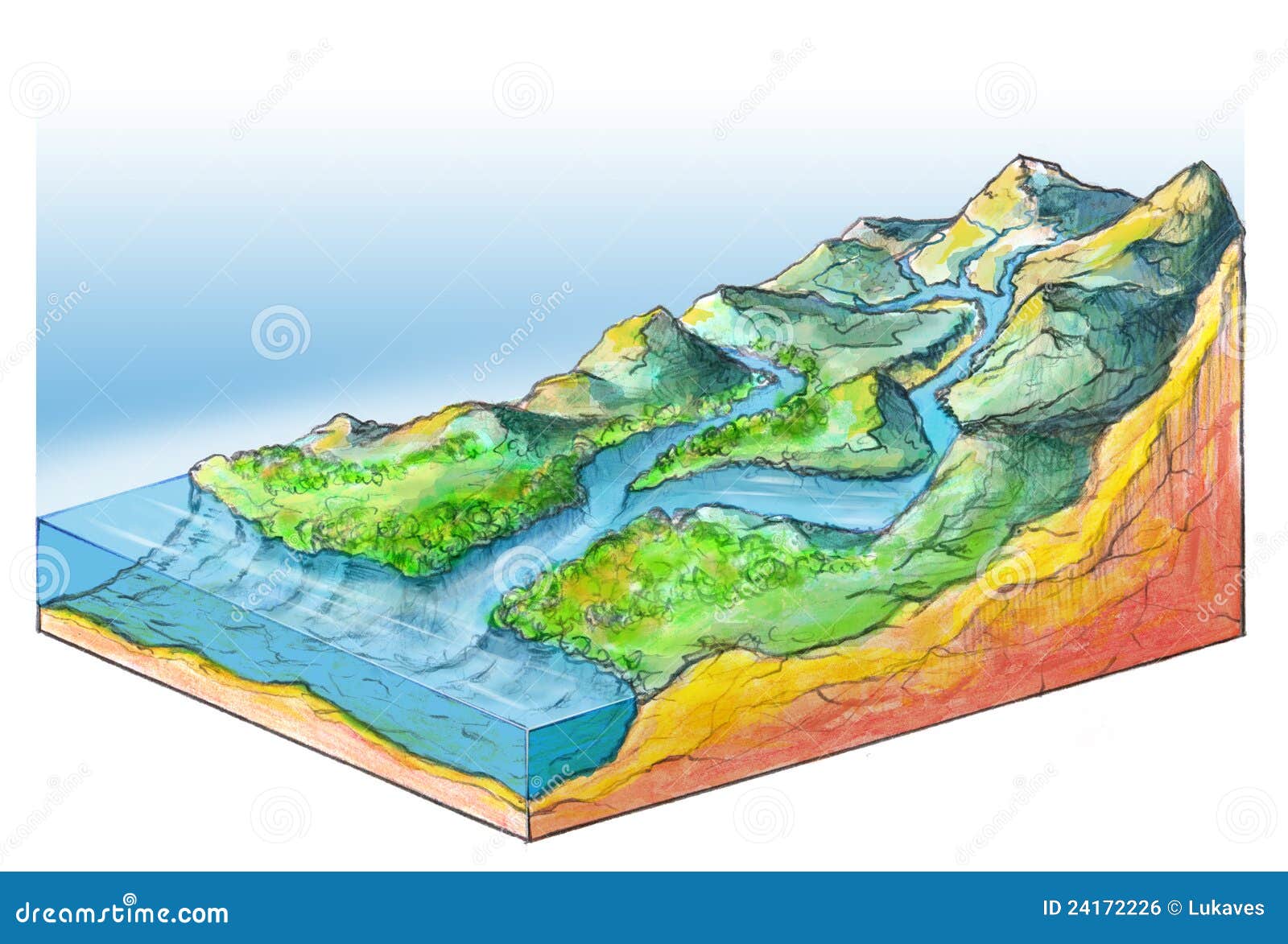As the “mouth of a river nyt” takes center stage, this opening passage beckons readers with rich, evocative language into a world crafted with profound knowledge, ensuring a reading experience that is both captivating and distinctly original.
At the confluence of rivers and oceans, where freshwater meets saltwater, lies a realm of ecological wonder and historical significance—the river mouth. This dynamic and fragile ecosystem teems with diverse flora and fauna, serving as a vital breeding ground for marine life and a sanctuary for migratory birds.
Environmental Impact of River Mouths
River mouths are dynamic and fragile ecosystems where freshwater from rivers meets the saltwater of the ocean. They support a diverse array of flora and fauna, including fish, shellfish, birds, and plants. However, human activities, pollution, and climate change pose significant threats to these valuable environments.
The unique ecosystem of river mouths is shaped by the mixing of freshwater and saltwater, creating a brackish environment with varying salinity levels. This diverse habitat supports a wide range of species adapted to these conditions. For example, fish like striped bass and flounder thrive in the brackish waters, while oysters and clams filter nutrients from the water, providing food for other organisms.
Impact of Pollution, Mouth of a river nyt
Pollution from industrial and agricultural sources can severely impact river mouths. Chemicals, heavy metals, and excess nutrients enter the water, harming aquatic life and disrupting the ecosystem. Pollution can also lead to algal blooms, which deplete oxygen levels in the water, further harming fish and other organisms.
Climate Change
Climate change is also affecting river mouths. Rising sea levels are pushing saltwater further inland, changing the salinity levels and affecting the distribution of species. Warmer temperatures can also lead to increased algal blooms and disrupt the timing of fish migrations.
Human Activities
Human activities, such as dredging, construction, and shoreline development, can also damage river mouths. Dredging can destroy important habitats, while construction and development can alter water flow patterns and increase erosion.
Conservation Efforts
Despite these challenges, there are successful conservation efforts aimed at protecting river mouths. These include restoring wetlands, reducing pollution, and managing human activities. For example, the Chesapeake Bay Program has made significant progress in reducing nutrient pollution and restoring oyster populations in the Chesapeake Bay.
Economic Significance of River Mouths
River mouths have played a pivotal role in human civilization, serving as gateways for trade, transportation, and fishing. Their unique ecosystems and proximity to both land and sea offer a multitude of economic benefits, shaping the development of societies throughout history.
As the sun peeked through the window blinds , casting a warm glow on the room, a gentle breeze rustled through the leaves outside, carrying with it the scent of blooming flowers. The air was filled with a sense of tranquility and inspiration, inviting me to embark on a journey of words.
A journey that would take me to the realm of fashion icons and the world of technology. It was a journey that would see me contribute to the mix of ideas and perspectives that shape our collective consciousness. As I pondered the possibilities that lay ahead, a phrase from a recent article caught my attention: “prefix with byte.”
A concept that spoke to the power of language to transform and redefine our understanding of the world around us.
Historically, river mouths were strategic locations for establishing ports and trading centers. The convergence of water routes and land transportation made them ideal hubs for the exchange of goods between different regions. This led to the rise of prosperous cities and empires, such as Alexandria in Egypt and Venice in Italy.
Tourism and Recreation
Today, river mouths continue to be economically important, particularly for tourism and recreation. The scenic beauty, diverse wildlife, and accessibility of these areas attract visitors from around the world. Activities such as boating, fishing, and birdwatching generate significant revenue for local communities.
Food Production
River mouths are also vital for food production. The nutrient-rich waters support a wide variety of fish and shellfish species, making them important fishing grounds. Aquaculture, the farming of aquatic organisms, is also a thriving industry in these areas, providing a sustainable source of seafood.
Challenges and Opportunities
While river mouths offer significant economic benefits, they also face challenges related to pollution, overfishing, and habitat loss. Sustainable development practices are crucial to protect these ecosystems and ensure their long-term economic viability.
By investing in conservation measures, managing fisheries sustainably, and promoting responsible tourism, we can harness the economic potential of river mouths while preserving their ecological integrity for future generations.
Cultural and Historical Significance of River Mouths
Throughout history, river mouths have held profound cultural and historical significance, serving as both physical and metaphorical gateways between land and sea. They have been places of inspiration, commerce, conflict, and settlement, leaving an indelible mark on human civilization.
Mythology and Folklore
In many cultures, river mouths have been associated with the origins of life, the abode of gods, and the boundary between the living and the dead. The ancient Egyptians believed the Nile River mouth was the birthplace of the sun god Ra, while the Greeks saw the mouth of the Acheron River as the entrance to the underworld.
Historical Events and Figures
River mouths have witnessed some of the most pivotal events in human history. The Battle of Salamis, a decisive naval battle in the Greco-Persian Wars, took place at the mouth of the Saronic Gulf. The arrival of European explorers at the mouths of major rivers, such as the Mississippi and the Amazon, marked the beginning of colonization and the transformation of the New World.
Preservation Efforts
Recognizing the cultural and historical significance of river mouths, efforts are underway to preserve these heritage sites. The United Nations Educational, Scientific and Cultural Organization (UNESCO) has designated several river mouths as World Heritage Sites, including the Danube Delta in Romania and the Sundarbans in Bangladesh.
Scientific Research at River Mouths
River mouths are dynamic and diverse ecosystems that provide unique opportunities for scientific research. The convergence of freshwater and saltwater creates a complex environment that supports a wide range of plant and animal life, making river mouths ideal for studying biodiversity, water quality, and sediment transport.
Scientific research at river mouths plays a crucial role in informing policy decisions related to river mouth management. By understanding the complex interactions between the river, the ocean, and the surrounding environment, scientists can help policymakers develop strategies to protect and restore these valuable ecosystems.
Groundbreaking Scientific Discoveries at River Mouths
- Discovery of new species: River mouths are often home to unique and endangered species that have adapted to the specific conditions of the environment. Scientific research has led to the discovery of new species of fish, invertebrates, and plants that are found nowhere else on Earth.
- Understanding of sediment transport: River mouths are important sites for sediment deposition and erosion. Scientific research has helped us understand the complex processes that govern sediment transport in these environments, which is essential for managing coastal erosion and protecting infrastructure.
- Monitoring of water quality: River mouths are often impacted by pollution from upstream sources. Scientific research helps us monitor water quality and identify the sources of pollution, which is essential for protecting public health and the environment.
River Mouths in Literature and Art
The convergence of river and sea has long captivated the human imagination, inspiring countless works of art and literature. River mouths embody the meeting of two worlds, a place of both beauty and danger, where the familiar meets the unknown.
Artists have captured the grandeur and mystery of river mouths through various mediums. In paintings, the vast expanse of water and sky creates a sense of awe and wonder, while the intricate patterns formed by the currents and eddies evoke a sense of chaos and unpredictability.
Metaphors and Symbols
River mouths have also served as powerful metaphors and symbols in literature. The transition from river to sea represents the journey from life to death, the known to the unknown. The mouth of a river can symbolize both the beginning and the end, the promise of new possibilities and the inevitability of change.
In poetry, the river mouth often evokes a sense of longing and nostalgia. Poets use it as a metaphor for the passage of time, the loss of innocence, or the bittersweet memories of childhood.
In literature, river mouths can serve as settings for pivotal events or moments of transformation. The confrontation between good and evil, the struggle for survival, and the search for meaning often take place at the edge of the world, where the river meets the sea.
Closing Notes: Mouth Of A River Nyt
Throughout history, river mouths have played a pivotal role in human civilization, serving as gateways for trade, transportation, and cultural exchange. They have witnessed the rise and fall of empires, inspired countless works of art and literature, and continue to provide sustenance and livelihoods for communities around the world.
As we delve deeper into the multifaceted world of river mouths, we will explore their ecological significance, economic importance, cultural heritage, and scientific value. Along the way, we will discover the challenges they face and the conservation efforts underway to protect these irreplaceable natural treasures.
FAQ Compilation
What is the ecological significance of river mouths?
River mouths are highly productive ecosystems that support a diverse range of flora and fauna, including fish, shellfish, birds, and mammals. They serve as nursery grounds for many marine species and provide important habitats for migratory birds.
How do human activities impact river mouths?
Human activities such as pollution, climate change, and overfishing can have a significant impact on river mouths. Pollution can degrade water quality and harm marine life, while climate change can alter salinity levels and disrupt ecosystems. Overfishing can deplete fish populations and disrupt the food chain.
What are some examples of successful conservation efforts at river mouths?
There are many successful examples of conservation efforts at river mouths around the world. These efforts include habitat restoration, water quality improvement, and sustainable fishing practices. One notable example is the restoration of the Chesapeake Bay, which has resulted in significant improvements in water quality and fish populations.




/MississipiRiverMouth-5c78c6ec46e0fb0001a5f009.jpg)